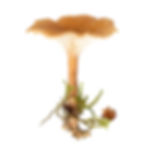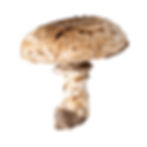Mushrooms - August 2023 Part 1
- David Winnard
- Aug 3, 2023
- 2 min read
Well with the weather being very wet it is no surpirse that mushrooms are appearing all over the place right now. Weird weather can throw up unusual finds and already this week we have encountered five species locally which are not at all common, with one a county first.

The first of our finds was Infundibulicybe costata, a species which has not been recorded in North-East Wales before. Where it was growing, along the side of forest plantation, it was quite numerous and most surprising as it is an area I have walked many times before and never seen them before. A distinctive species which when dry and applied with KOH it turns dark brown.

The second is a species only recorded on one other occasion in North-East Wales, Agaricus subperonatus. A large Agaricus, this was growing by the side of the road not far from where we live, growing on rich soil under conifers. There were a number of specimens already gone past there best and rotting down so I was lucky to find this one, although it was full of maggots.

With a name like Fatal Dapperling you do not need to ask whether this is an edible species or not. This was growing on an Industrial area at the side of the road and a species I have only encountered a few times before, all in Cheshire. It is a rare species in North-East Wales but all the records are relatively recent.

Around the corner from the Fatal Dapperling was this beauty of a Bolete, Suillus collinatus. It is a uncommon species with a handful records in the area and always under Pine. The distinctive feature of this species is that the mycelium is pink (which you just make out in the base of the stem in this image). Always a nice species to find.

Finally I found a huge crop of Rooting Boletes, Caloboletus radicans. These are big heavy Boletes which turn blue when handled. Growing with Oak in an urban park it follows the trend of mine for finding this species in urban areas and never in the 'wild'. I am not complaining, it is a favourite of mine to find, satisfying have in the hand.
And with it only a few days into August who knows what the rest of the month will provide!



